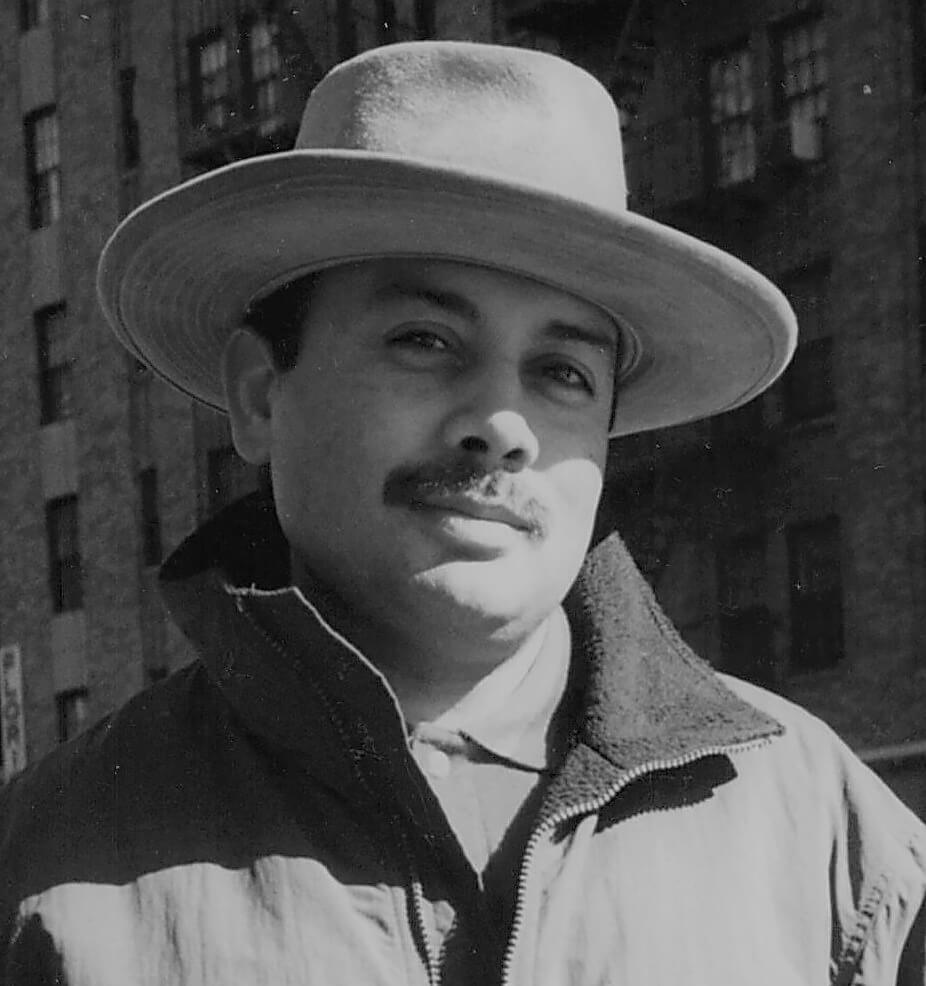“We are enveloped and steeped as though in an atmosphere of the marvelous; but we do not notice it.” – Charles Baudelaire, 1821-1867
“There was neither non-existence nor existence then; There was neither the realm of space nor sky which is beyond. What stirred? Where?”
– The Rig Veda, Hymn 10-129, 1500-1000 BC
In 2013 I had walked anxiously around in South Delhi by my old neighborhood and didn't see anything recognizable. There was always this
belief that I could always visit my old places and they would be there, untouched – it was an illusion. Not a molecule of it was there to
connect to – it was erased by progress. Standing there under a pall of melancholy an inexplicable longing had welled up in me that only a
Marcel Proust or a Giuseppe Lampedusa could have understood. The illusion I had for decades had simply evaporated. Only faint grainy
mental videos played out as I stared at the emptiness. And as I stood there a tall middle-aged gentleman had approached me and asked me
who I was, and if I was OK. It was only when I was invited and having tea in his living room did I realize who he was – an old neighbor I
had played with, a lifer there. He never recognized me, and I had left it at that and moved on. People do not react the way we expect them to.
We can be poles in our sentiments. Progress with time is a poisonous recipe for nostalgia. We are better served by those ancient Buddhist
precepts of non-attachment, dis-association and transience, which is the only anesthetic against such futile expectations of our internal
atmosphere – but then who can afford to be an ascetic?
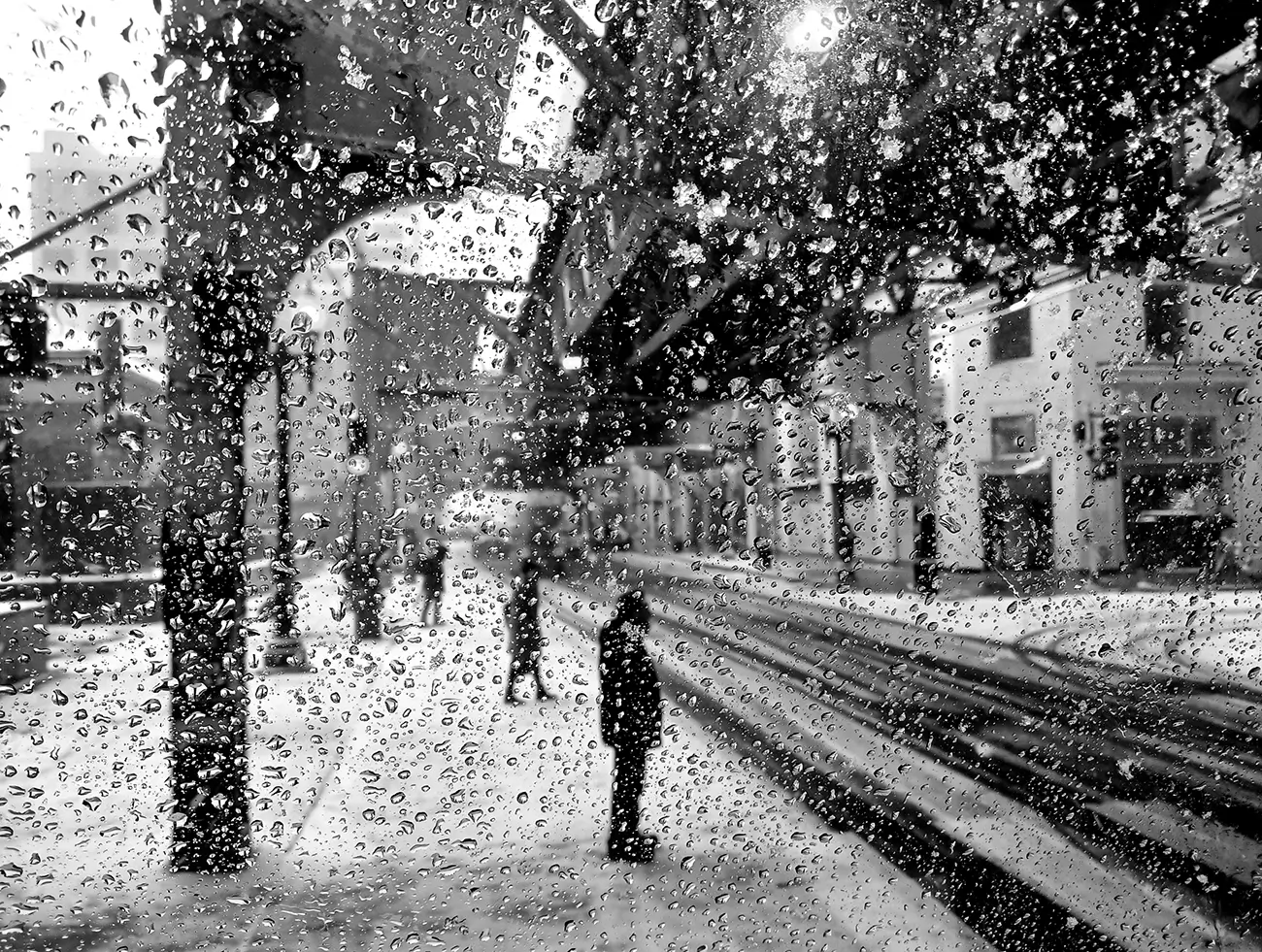
Winter noir, December in Chicago © Raju Peddada
Upon scrutiny and less arguably, our decisions and choices are often based on atmosphere. We create our home atmosphere, we shop at
designed atmospheres, our gatherings are of an atmosphere, and so are our relationships. We have been conditioned with specific internal
atmospheres that automatically seek external resonance in everything we engage in. It's our internal atmosphere that's expressed in our art,
our creations and our choices, as depicted in the myriad mythologies, ancient and contemporary. Occasionally we come upon an object or an
image, multi-dimensional or in mere two dimensions, suspended in an ambiance, which evokes a certain past, a longing. Here's how the
French phenomenological philosopher, Maurice Merleau-Ponty saw atmosphere and its perception:
“As far as bodily space is concerned, it is clear that there is a knowledge of place which is reducible to a sort of co-existence with the place, and
which is not simply nothing, even though it cannot be conveyed in the form of a description or even pointed out without a word being spoken.”
A photograph's aesthetic preponderance is not in its clarity or its composition, but, it's in its atmosphere, the mood it evokes –which the German philosopher and literary critic, Hans Ulrich Gumbrecht refers to as “Stimmung.” The importance of atmosphere cannot be
understated in any great work of art, which in fact is integral to it. It's seldom the tangible considerations that constitute beauty, instead its
the intangible aspects that coalesce as a composition of sublimity, if we are acute. Atmosphere pulls together everything, like a theme. In the
scientific context atmosphere is the layer or cover of gases that surrounds a planet, held in place by its gravity. However, the atmosphere I
am referring to is a condition that affects our mood by evocation or provocation – which a critic refers to as the nostalgia principle, another
as the emotional space. Atmosphere is an evocation mechanism – it is the close cousin to ambiguity, both, thresholds of inexplicably
profound aesthetic variations.
To see or sense atmosphere one must have a discriminatory acumen, be perspicacious. In the context of it, seeking the essence of our
perception is to understand that perception is never the presumed truth, but rather it's only an access to truth – a gateway to various
possibilities in understanding. Atmospheric space is not a setting where things are arranged, rather, it's a sort of ether, the fifth element, in
which all things are suspended, or in abstract terms, a characteristic quality that holds everything together or some sort of esoteric energy
that enables all elements that connectivity without being obvious or overwhelming in detail – well, almost like an invisible author.
Atmosphere is also the weather of our psyche that effects us, often with an oxymoron: creative melancholy.
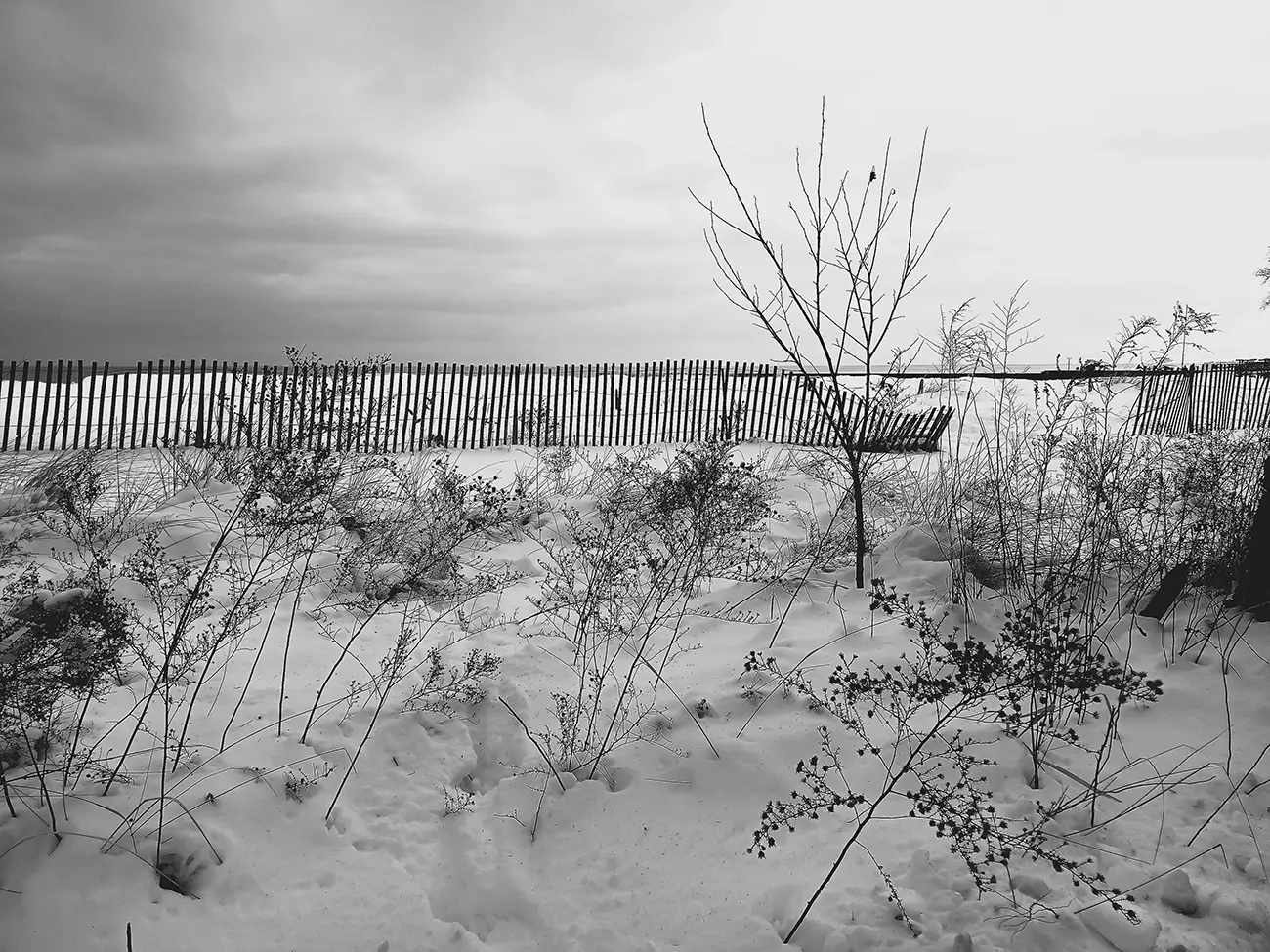
Lake Michigan in Winter © Raju Peddada
have an enormous impact as to why and where we move around in our daily lives. The four variants,
sound, wind, smell, and light, induce our movements, especially, within our worlds of work and entertainment –
Sounds: The wooing and
whistling breeze over a grassland prairie telegraphs a vastness, interrupted by a cricket's metronome like clicking nearby and a bird's
asymmetrical chirping arriving and soon fading in the distance – as the vibrations of the ephemerality of our lives in the vastness of time and
the setting.
Smells, in variation as fragrance and odor also dictate our movements. The fragrance of the wildflowers in a meadow induce our
walk towards them, then an intense odor of an unseen decomposing carcass drives us away. Similarly,
Light also plays us daily with its gray
predawn ambiance to mesmerizing gold-orange tone on the horizon when the sun breaks it. An hour later we are shielding ourselves from it.
Dust and moisture also influence the aforementioned elements to effect our behavior. India is the cornucopia of varied visual dramas in the
heat, dust and moisture that E. M. Forster had so eloquently dramatized in his novel. Atmosphere sucks us in or repels us – it's a dual
paradoxical zone.
Atmosphere is not Platonism, but Aristotelian in manifestation, it's not about purity, but of an amorphous aspect. Charles Dickens's
“Bleak
House” is an atmospheric masterpiece. He sets the tone of the entire book in the first paragraph. Thomas Mann's
“The Magic Mountain” is
about a “thin air” character in a clinical setting who figures out that living a moment is better than lifetime of cure. The concept of Noir,
meaning “black” in French, is based on atmospheric cynicism, a sort of fatalism, the fog of dilemma or moral ambiguity. Wong Kar-wai's
2000 visual classic is his
“In the Mood for Love,” an exploration of the proximity of possibilities in love, in small and tight places, yet
juxtaposed with restraint, abstinence and fumes of diffidence. And of course, Ridley Scott's 1982
“Blade Runner,” a wet-neon-smoky
treatise on the protagonist's moral miasma. Regardless of the photographic fundamentals, critics, connoisseurs and collectors will be better
served in prioritizing a photograph's atmosphere than all else, unless the objective is a documentary record. Atmosphere is that two-ton white
rhino in the room one could easily miss, and generally do – I hazard to say, including photographers.
“In Praise of Shadows” by Junichiro Tanizaki is another profound postulation in Japanese aesthetics on atmospheric thresholds to enhance
our coexistence with often ignored mundane daily occurrences like shadows. It's the dimness of light that amplifies the other atmospheric
elements like water flowing or dripping, the buzz of a bee or a fly, the leaves brushing against the wall in a cadence in concert with the
breeze, or that distant undulated bird or train – which I had experienced in the deep dusk lit only by kerosene lanterns of our rural vacations a
lifetime ago. On the other side of this is the harsh light, which obfuscates the other atmospheric elements, because light causes us to see
more and hear less, handicapping us with the small details. You see, in dark shadows we see with our ears, and in harsh light we listen
markedly less with our eyes – our synesthetic faculty is reduced in bright light.
Poets, literary artists, philosophers-thinkers alike, and modern day media artists in digital, CGI and AI arenas have all been enamored with
and allured to atmosphere as an aesthetic tableaux – a threshold for infinite creative possibilities. A dissertation like this is a tragically
limited F-stop in space to explore this universal sized concept, that too in the context of aesthetic, and not science. Suffice it to say that it has
been explored, experimented with and subjected to dialectical convulsions since the dawn of humankind's creativity. The grand repository of
the basic aesthetic concepts in history is referred to as
“Aesthetische Grundbegriffe” where a David E. Wellbery, a professor of German
Studies at the University of Chicago had contributed to its glossary on Stimmung (mood-atmosphere) by exploring Goethe's “Falconet” –
and he states, “Its' the sensation of all encompassing unity and harmony experienced in often mundane and common place things...” which
had been echoed by every aesthete and thinker worth their salt.
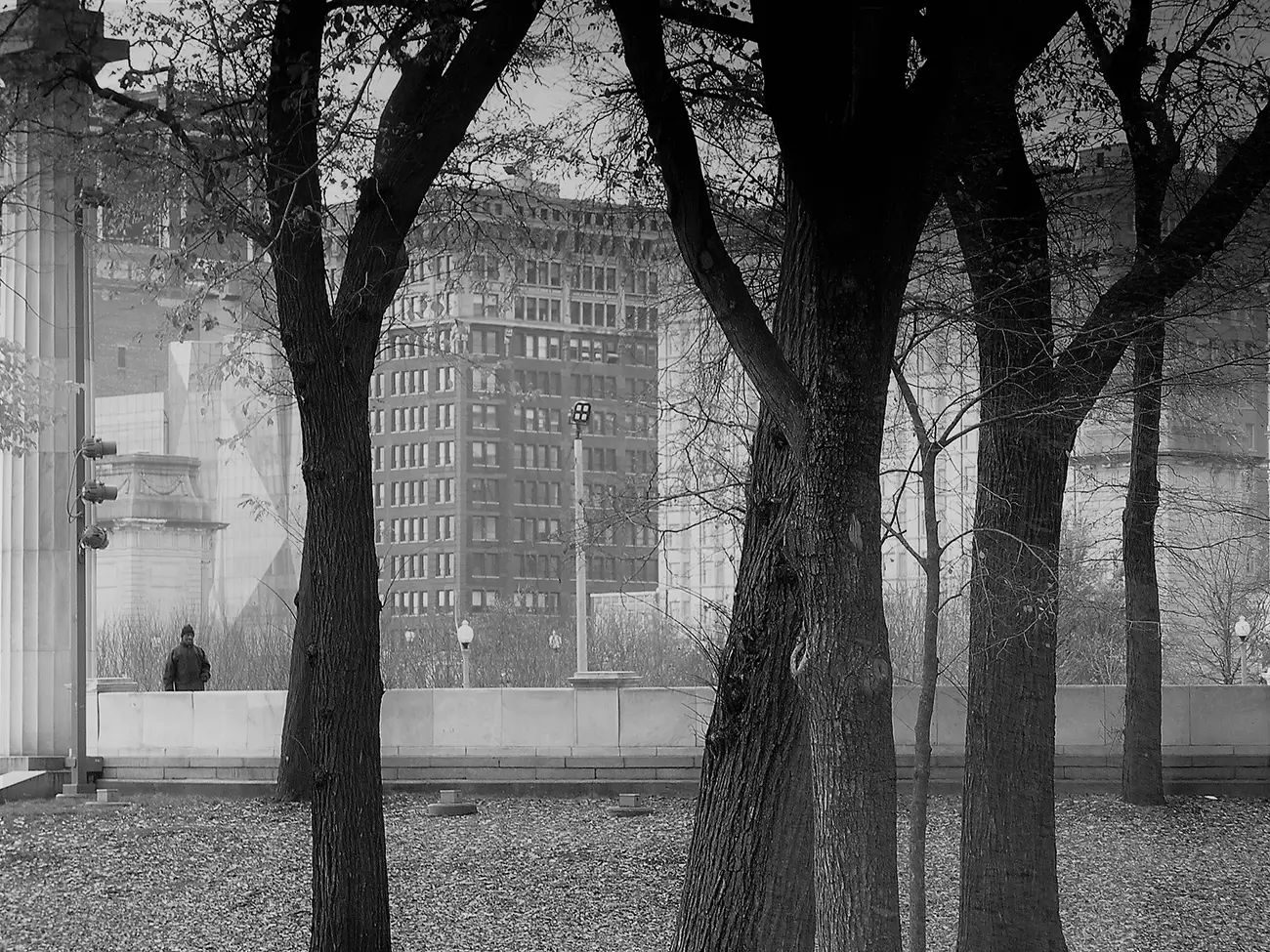
Lonely at Dusk © Raju Peddada
, the literature Nobel Laureate had expressed this on the subject, “...being touched as if from the inside.” And,
Hans Ulrich
Gumbrecht, the philosopher-aesthete that had explored the concept in his seminal thesis: Stimmung” had yielded, “I cannot claim to
understand this dynamic much less account for it fully.”
Immanuel Kant, in his
“Critique of Judgment” offered us a twofold conception of
man: A. sensuous and B. reason – and went on to say, “...beauty is not an inductive idea, but rather an imperative.” Thus, an artist who
recreates accurately is a technician, but an artist who gives us an atmosphere, mood – is a poet.
Friedrich Schiller, in his original,
“On the
Aesthetic Education of Mankind,” he had said, “...to pass from sensation to thought the soul traverses a medium in which sensitivity and
reason act in accordance simultaneously.”
Friedrich Holderlin, another German poet-thinker had posited that some esoteric sounds are
distinct from our own time and place that recreate the inexplicable, by which he means evocation – which I agree with absolutely. I had
experienced an involuntary conjuration of ancient life in the Levant by listening to No. 6 Hurrian Hymn, a composition from 1400BC found
on a clay tablet in modern day Syria and played on the ancient Lyre by Michael Levy – the transportation was undeniable. The atmosphere of
ancient Roman ruins did this to Edward Gibbon and Constantin Francois De Volney – both poured their hearts out in their works.
Nietzsche had argued that Stimmung stood for memories and intuitions from the early stages of humanity's existence. Indeed, it falls into
that category of evocation. Then there is
Alois Riegl, an Austrian art historian, a practitioner of Formalism (emphasizes compositional
elements in the arts) had professed that Stimmung is the force behind the Nostalgia Principle – again, falls under evocation. And finally
Martin Heidegger granted atmosphere or Stimmung the central role in his masterwork,
“Being and Time,” as an existential condition of
“Throwness,” as he puts it – its the concept of a human condition being placed into an existence without choice – thrown into it.
Case in point are the photographs I have culled to explicate this complex aesthetic alchemy: Atmosphere. Recently, I had posted a photograph on Social Media that I had taken with my smartphone on a stormy December day last year – it resonated with thousands of
viewers, unlike the ones I had posted before. And, when I asked a few respondents as to why that specific picture – their responses correlated
with all the others of the past on such topics. Here are some of their responses:
“It feels like a scene from the turn of the last century, written by Dostoevsky.”
“I feel cold looking at it – as if I am there waiting...”
“I feel sad looking at those people standing... nonentities like all of us, destined to vanish.”
“...wish I was friends with the folks in the picture – just wondered what their stories were...”
“It's a scene from my childhood – as we waited for the school bus...”
This is, again a woefully small forum to meander into on anything like this. The
“Atmosphere and Aesthetics,” edited by Tonino Griffero
and Marco Tedeschini posits the concept of atmosphere as an emotional space – this reminds me of the paintings by J. M. W. Turner, who
attempted to master his own internal storms, by searching for the same in and around Margate, a coastal town in England. In this small
taxonomy I have identified three types of atmospheres: A. one orchestrated by nature, moisture and gases, which I label as involuntary –
with photos 1 and 2 by my son, deployed by the US Navy near the Sea of Japan, and mine of a Chicago day; B. the voluntary atmosphere by
our species, especially urban, which had been my practice to study can been accessed in my many articles; and C. accidental-incidental
atmosphere as a result of animal behavior, which Sebastiao Salgado had captured so eloquently in remote locations.
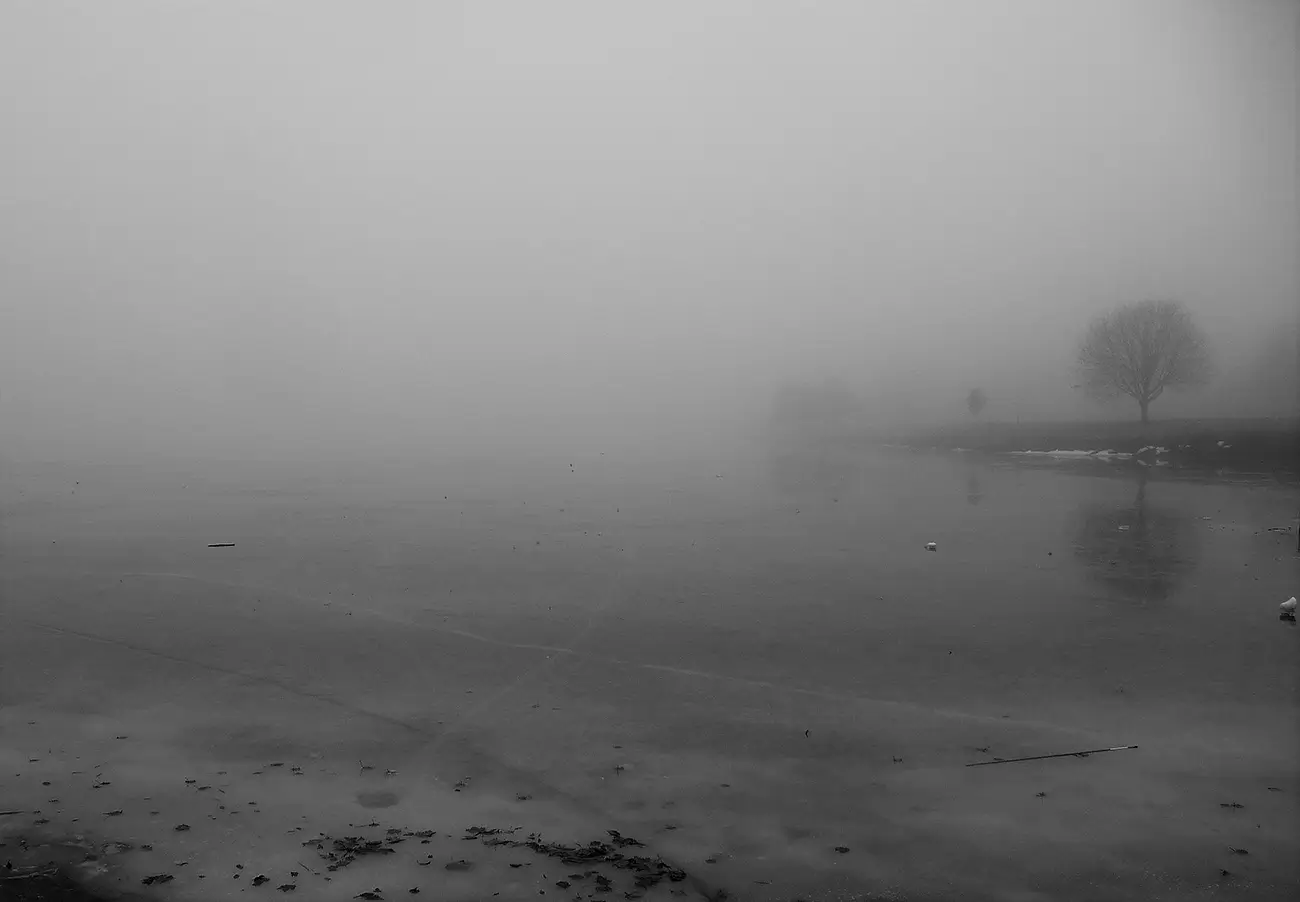
Winter fog over frozen lake © Raju Peddada
There's an explanation in the fact that life is a murky nonlinear abstraction, a nebulous algorithm, and many aesthetes, literary artists, and
thinkers assign high aesthetic value in ambiguity and atmosphere because of its mysterious resonance with our psyches. Atmospheric Reality
is not a static concept, it's kinetic, osmotic, amorphous and ever restructuring or reformulating. Trying for static clarity is a denial of reality,
reducing reality to an object, it's creative fatalism – unless we are doing product shoots. Just imagine if Steven Spielberg had used a
stationary camera, instead of that handheld cam movement in distressed-realism to shoot his cinematic gem:
“Saving Private Ryan.” What
the effect would have been? It would have looked something like D. W. Griffith's
“Intolerance” – much less, because D. W's masterpiece
was created in the 2nd decade of the 20th century, where as SPR was set in a hyper kinetic event of the mid-20th century and shot in the 21st
century. The methodology of SPR filming with a hand-held cam had its desired affect on the veteran audiences at a screening event for them:
“It was very real, I felt I was there all over again...”
Finally, I am sure of this that many photographic hedonists in their Herman Miller loungers are squirming at the prospect of ingesting such
abstruse complex and recondite concepts to just craft an image. True, this not for the uninvolved, but then, the expansion of our perception,
our acumen, our sensitivity by equipping ourselves with every possible angle of visual wisdom is my objective: advancing our creative
photographic capacity to keep pace with the evolving technology is an imperative. We must become aware of the metaphysical aspects of
atmospheric aesthetics and its psychological impact on us – potentially, giving us new thresholds and applications in the field. In cinematic
parlance, atmosphere is that visual subtext, that remains unseen mostly, but felt and sensed, and is present for the most part, as the essence,
influence and undercurrent of the premise and the theme -- without which no story or composition is complete or consummated.
Copyrighted June 12, 2025 by Raju Peddada. All Rights Reserved on Text and photographs.
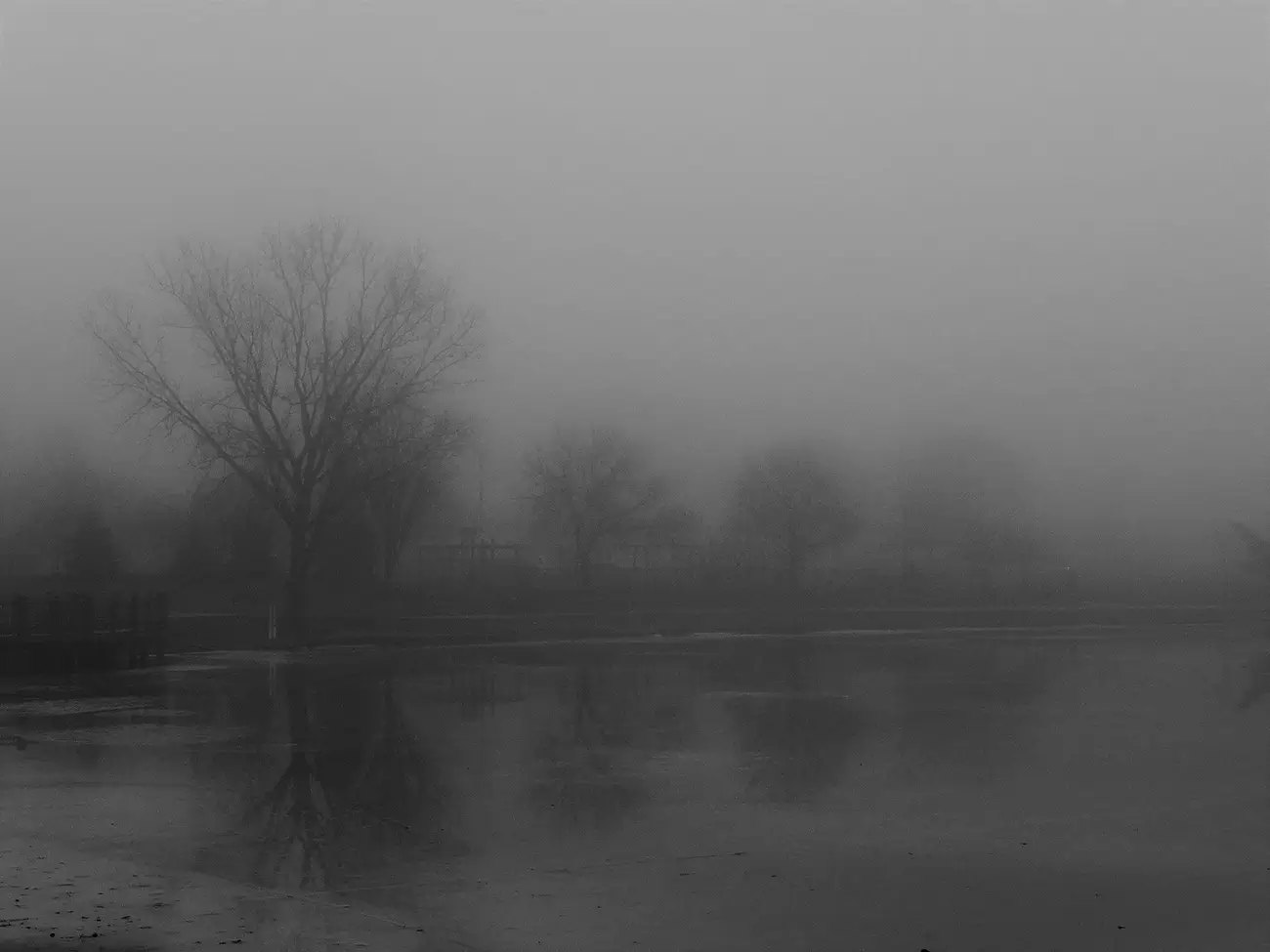
Winter fog over frozen lake © Raju Peddada
